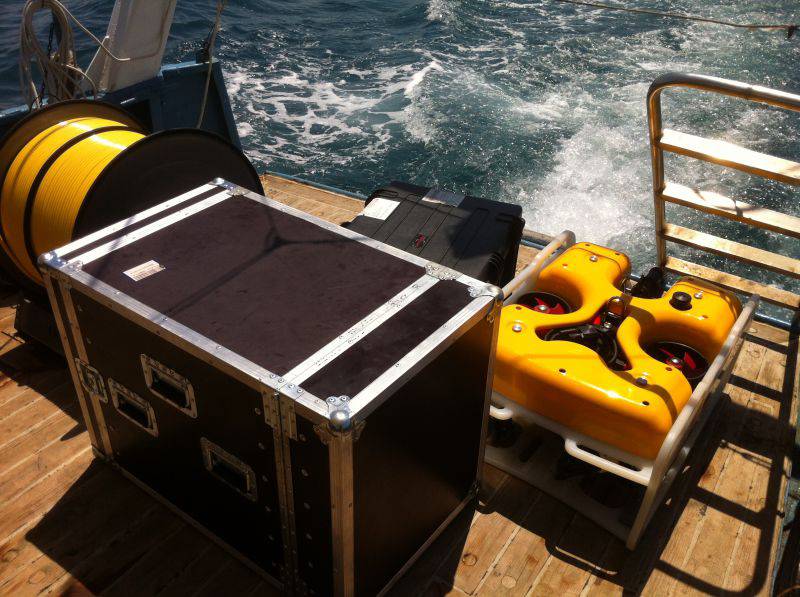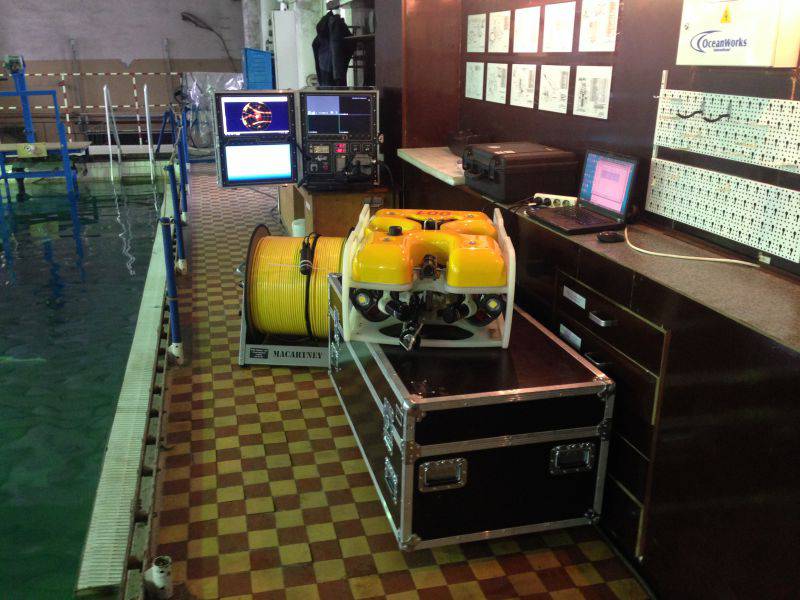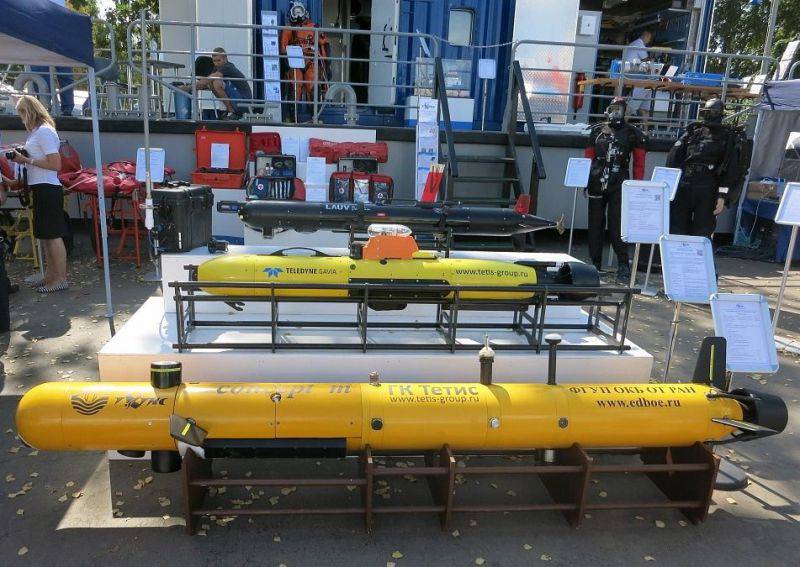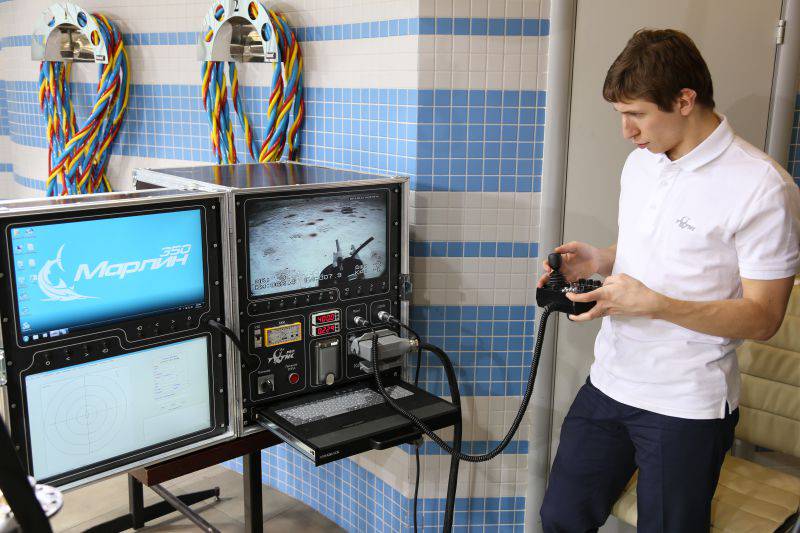The death of Kursk influenced the development of rescue services in the Russian Federation
On Wednesday 15 marks the anniversary of the death of the submarine Kursk, which sank in the Barents Sea. In many ways, this tragedy forced the search and rescue service of the Russian Navy to begin upgrading rescue equipment and finding new measures to ensure the safety of submariners. Alexey Kayfajyan, CEO of Tethys Pro, who played a key role in updating the search and rescue, told in an interview with RIA Novosti correspondent Andrei Chaplygin about what progress had been achieved in this direction over the past 15 years. Russian fleet services.
— The tragedy with Kursk undoubtedly changed a lot in the approach of the naval command to the preparation, equipment and organization of rescue units in the fleet. Tell me, how was this reflected in practice?
- First of all, I want to note that all over the world, catastrophes are always the impetus for the development of technology in ensuring rescue and safety. The tragedy of "Kursk", of course, seriously affected the further development of the search and rescue support of the fleet and the search and rescue services of Russia as a whole. This tragedy showed a certain lag in the technical means that existed in Russia at that time, from the constantly developing and updating rescue systems in the world. In this regard, based on the results of joint work of Russian and foreign rescuers, it was decided to purchase a number of basic modern samples of underwater technical equipment to provide rescue operations. In particular, in the UK, workers were acquired uninhabited underwater vehicles "Venom" and a whole line of modifications of the apparatus of the inspection class "Tiger" with different depths - on 1000, 600 and 300 meters. Various diving equipment was also purchased, including television complexes, communication stations and compressor installations for diving operations.
- And what role in this update was assigned to "Tethys"?
- At that time, Tethys acted as a kind of technical expert and intermediary between Rosoboronexport and foreign manufacturers of this equipment, since at that time we already had partnership relations with these suppliers. After these technical tools were acquired, we organized our own installation on ships of the Navy and commissioning with the development of relevant documentation for our seamen.
— Is it possible to say that the effective search and rescue system of the Navy today has finally developed?
- It should be noted that the development of the means necessary for underwater work is not enough to create a search and rescue support system, it should be considered as a set of measures. We are talking about the presence of specialized carrier vessels, technical means, trained personnel, both in the rescue units of the Navy, and on the ships and submarines. In other words, the harmonization and efficiency of the system can only be talked about if there is an appropriate shipbuilding program, when creating various search and rescue tools, as well as developing and installing individual and collective rescue tools on the ships and submarines themselves. All these components must match each other, develop in parallel and in a complex.
- Now, when the Russian Navy is equipped with the necessary number of rescue equipment, what steps is Tethys Pro taking to provide the fleet with a wide range of Russian analogues of foreign underwater technical equipment?
- When making a decision on the purchase of modern equipment, the ideology of development and our tools and systems were laid. This task "Tethys Pro" set himself and enlisted the support of the Navy. At the moment, if we sum up these 15 years, we produce modern diving equipment on our squares, which is not inferior, and in some technical characteristics, and superior to imported analogues.
Having gained operating experience of foreign analogs and having understood their merits, we also produce underwater television complexes, diving communication stations, compressors to provide diving descents, various diving tools, including a remote-controlled uninhabited underwater vehicle, so far with working depth to 350 meters. All these tools are already mass-produced and accepted for supply, with the exception of the Marlin-350 submersible, which has successfully passed state tests and is planned to be accepted for supply in August-September of this year.
- And how many such devices are planned to be delivered to the Navy?
- Five vehicles are scheduled for delivery in 2016. In the draft state order for 2017, the purchase and installation of these devices in the interests of the Navy is also foreseen.
- Do you plan to create a “older brother” “Marlin” with a working depth of up to a thousand meters or more?
- We are currently conducting development work on the development, creation of a prototype and testing of the Marlin-1000 apparatus.
The planned completion date of the development work, that is, the creation of a prototype and relevant documentation, is the first quarter of 2016 of the year. In the 2016 year, we plan to conduct state tests in order to submit this device for acceptance to the supply of the Ministry of Defense. We also have an autonomous, uninhabited underwater vehicle with a depth of up to a thousand meters - the "Concept-M". It has already been developed, now it is being prepared for mass production. This is an autonomous search uninhabited device, the Russian equivalent of the Gavia apparatus, but it will be a completely domestic product. If we talk about remote-controlled vehicles, such as "Marlin", they are used mainly for technical work, for surveying and preparing for ship-raising and other underwater operations. Autonomous vehicles are used to search for objects lying on the ground, that is, sunken and emergency objects.
— Currently, the Russian military-industrial complex more than ever is the issue of import substitution. Are such tasks for Tetis in terms of maintenance of already purchased foreign vehicles?
- Naturally, at the end of last year and at the beginning of this year, we encountered difficulties in maintaining the underwater equipment supplied earlier and the impossibility of delivering certain components in connection with the announcement of sanctions. Since we have been carrying out maintenance contracts for more than eight years and not two years, we have been constantly working on the possibility of using domestic components for these works. To the maximum extent possible, we use Russian-made components to carry out maintenance of this imported equipment due to the fact that we are already taking warranty obligations, and taking this responsibility, we extend this warranty period. In connection with the sanctions, we did a great job of finding alternative suppliers from countries that did not join the sanctions. What we cannot produce ourselves or find at Russian enterprises, we are still buying in the countries of Southeast Asia and China. Maintenance, of course, will be carried out, and operation of imported equipment in the amount of its service life will be provided. If suddenly for some reason it will be impossible to carry out maintenance, we will completely replace these hardware with our domestic ones.
— Uninhabited underwater vehicles proved to be excellent in rescue work, and what are the prospects for their use in reconnaissance purposes or to provide mine defense?
- Uninhabited underwater vehicles, in my opinion, have a great prospect of using them for reconnaissance purposes and for ensuring mine defense due to the fact that these funds were initially created for work with potentially dangerous objects. Therefore, in order to ensure the mine support of the Navy, these devices should be one of the key technical means of work, and both remote-controlled and autonomous vehicles. The fact is that an autonomous device, in terms of the provision of mine protection, also makes it possible to secure the carrier vessel of this vehicle, since it does not have any hard connections with it, communication is carried out exclusively through the sonar channel or in the surface position over the radio channel. In fact, this is an autonomous uninhabited submarine in miniature.
— Among the key requirements of the Navy to promising warships and submarines of the new generation is the integration of unmanned systems, including submarines. Does Tethys lead development in this direction?
- All over the world there are models for the use of autonomous uninhabited underwater vehicles for reconnaissance purposes. This, of course, requires an extensive management system and quite serious financial investments in order to integrate these devices into the intelligence system of the Navy or the intelligence of the Ministry of Defense. If we talk about the developments of "Tethys", then we carried out work on the possibility of integrating an autonomous, uninhabited submersible into the technical equipment of the submarine. But for the time being these were exclusively technical proposals, since the funds of only our company to seriously address this issue on their own initiative are not enough.
- Who do you think should be involved in this work?
- In my opinion, this is the subject of serious complex work in military research institutions in order to develop both a model of use and requirements for these autonomous, uninhabited underwater vehicles. It is imperative to involve the designers of ships and submarines, as well as industry, in order to carry out these works so that impracticable requirements for any means are not formed. It is necessary to proceed from the requirements of the customer, and from the capabilities of the contractor. Only together with military science, design bureaus and shipyards, manufacturers of underwater vehicles, such as, for example, Tethys Pro, can carry out this work subject to state funding.
- Is Tethys Pro products in demand abroad or do you work exclusively on the Russian market?
- First of all, we work, of course, on the Russian market, since most of the range of technical equipment produced by us is supplied for the ministries and departments of Russia: the Navy, the Emergencies Ministry, the Ministry of Internal Affairs, the Federal Security Service and others. There are also such large corporate clients as Transneft and Gazprom, but we are nevertheless open to supply our equipment for export due to the fact that our country did not extend retaliatory sanctions to the nomenclature related to search and rescue facilities, because it is impossible and wrong to engage in rescue on the state and national principle. When a catastrophe occurs, this is a common thing, and, in my opinion, implies the unification of all search and rescue means and forces to save a person or prevent a catastrophe.
If we talk about the export of our company's products, this year two diving complexes were delivered to Germany to the Nordic Yards shipyard, where they were installed on multi-purpose rescue vessels under construction there. Also now "Tethys Pro" produces a search and rescue complex for installation on ships of the Navy of Kazakhstan, with the first complex in the series being planned for installation this year. Diving equipment and underwater equipment for rescue services of Belarus and Uzbekistan are constantly being supplied.
It is worth noting that there is a need for our products, confirmed through Rosoboronexport, in Egypt and India, but so far these projects are under discussion and pre-contract preparation.




Information